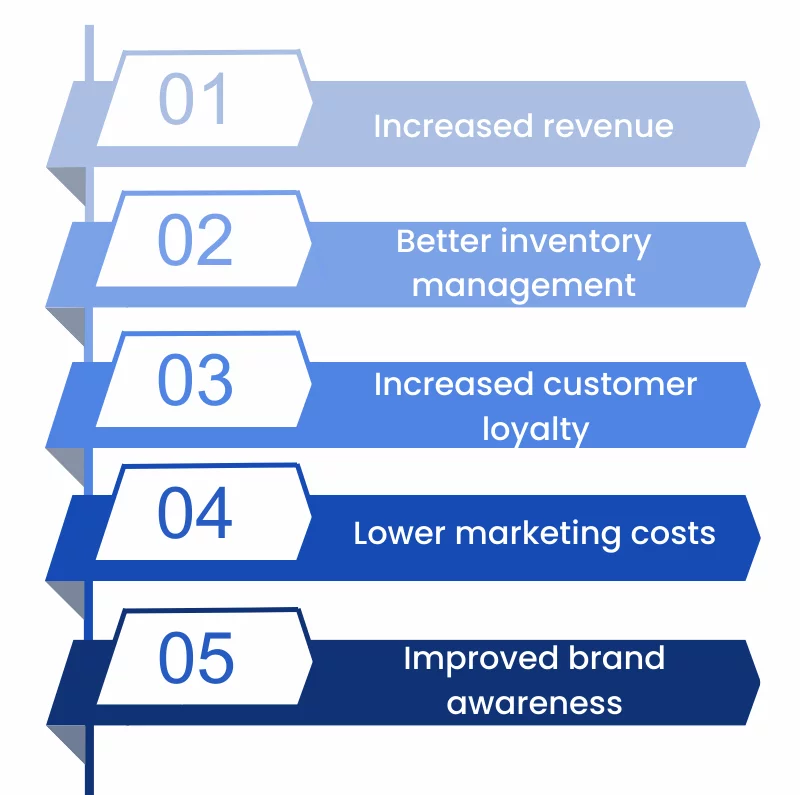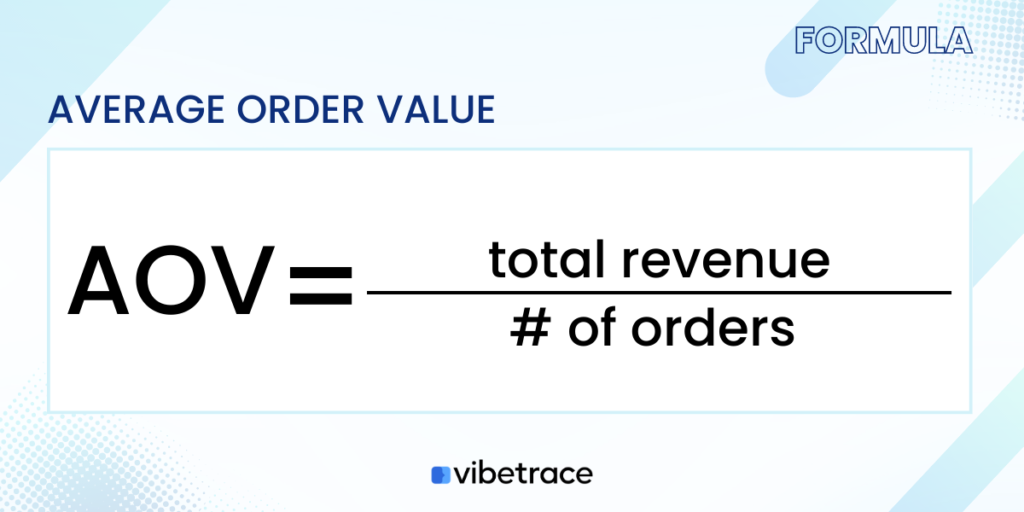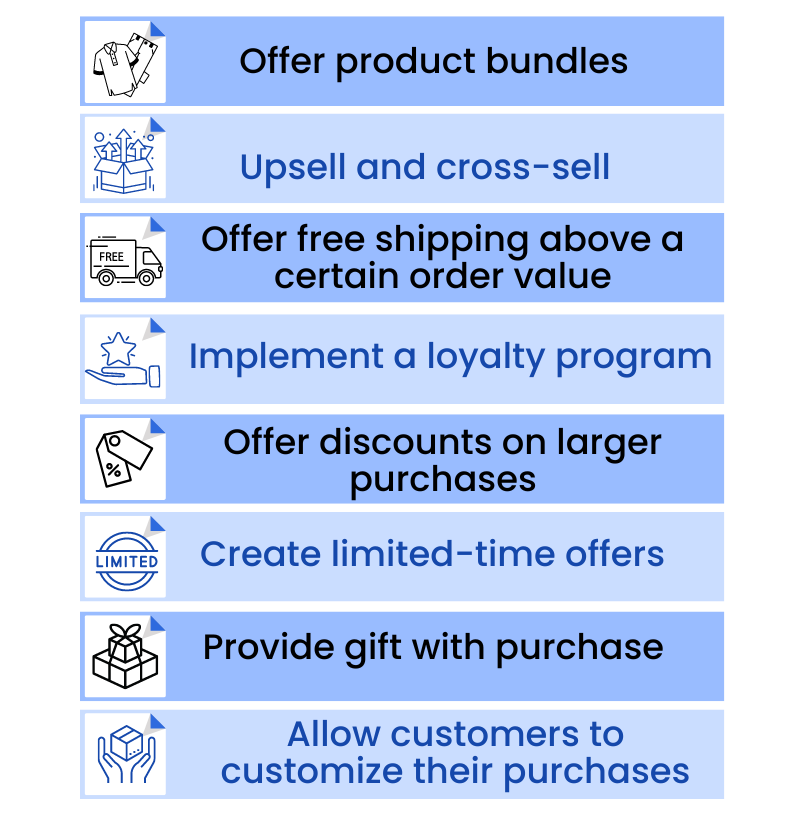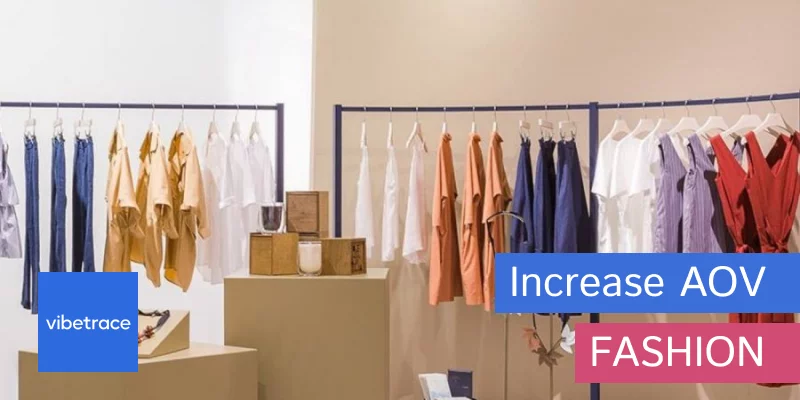The goal of every fashion brand is to bring in maximum sales and profits.
That’s why apparel and accessory brands spend around $656 million from their revenue on advertising and marketing. While these initiatives can invite traffic to the page, they do not guarantee a high checkout rate and even less sales.
So how can online retailers selling Fashion can increase their Average Order Value?
Marketing initiatives that fail to consider customers’ purchase behavior rarely invite conversions.
If you are a fashion brand you must study their buyer’s online shopping preferences to create campaigns that lead to sales. And you can do this using a powerful customer data platform and marketing automation solution like vibetrace.
One approach for studying customer purchase behavior is measuring the Average Order Value.
Average Order Value (AOV) is an eCommerce metric that calculates the average amount of money each customer spends over a specific period. This is determinant for the long-term value of each customer.
Knowing their Average Order Value, fashion brands can get detailed insight into their marketing and pricing strategies, and discover which ones are most effective. With this information, they can tailor initiatives that drive maximum sales.
Benefits of Increasing Average Order Value
Increasing your fashion store’s average order value (AOV) can bring several benefits to your business, including:

Increased revenue: A higher AOV means customers are spending more money per transaction on your store, which can directly increase your store’s revenue.
Better inventory management: When customers purchase more items in a single transaction, it can help you manage your inventory more efficiently and reduce inventory carrying costs.
Increased customer loyalty: Customers who spend more money per transaction are more valuable to your fashion store and are more likely to become your loyal customers.
Lower marketing costs: Acquiring new customers can be costly, so increasing the AOV of your existing customers can help you reduce marketing costs and improve the return on investment (ROI) of your marketing efforts.
Improved brand awareness: When customers purchase more items in a single transaction, they are more likely to share their experience with others, which can increase brand awareness and attract new customers.
Calculating AOV: Analyze Your Current Order Value
You can determine the brand’s AOV by dividing the revenue by the total number of orders.

Once you determine this value, you can examine the factors contributing to your current order value.
These include:
Pricing Strategy
Your pricing strategy significantly impacts the customer buying behavior and average order value.
If you are selling high-priced items that are not available anywhere in the market, your customers will be required to buy the item regardless of the price.
However, if you set a lower price under the same market conditions, shoppers will purchase more items than they did previously. This will increase your average order value.
Strategize your pricing to ensure it positively influences the AOV.

Customer’s Shopping Habits
With 46,567 clothing stores online, shoppers have unlimited options to choose from. Now, buyers prefer to research the brand, compare prices with competitors, and look for deals/discounts before making an investment.
Having a low average order value, you need to examine your brand from the target customer’s perspective. Read how you can do it.
This research can help you tailor marketing strategies in a way that compels the audience to choose your brand over competitors.
As 93% of companies see a positive result from personalized marketing, your brand can also benefit from this tactic by creating irresistible offers. This simple initiative can improve your average order rate.
Customer Segmentation
Instead of grouping all customers together, segment your average order value into three categories:
1. New customers – First-time buyers
2. Repeat customers – Loyal buyers who have placed multiple orders
3. Returning customers – Buyers placing their second order
This practice helps you evaluate whether you gain revenue from previous or new customers. If you don’t have a customer data platform that support this type of segmentation, then look at vibetrace.
It also allows you to calculate the customer retention rate because acquiring a new customer costs more than retaining an existing one.
Moreover, repeat customers of apparel stores spend 67% more in 31 to 36 months compared to their first six shopping months. So, the more loyal customers you have, the better your revenue and average order value.
Once you determine which segment influences the order value, you can implement tailored strategies to improve the low-performing segments.
For example, you can increase the order value of first-time customers by offering free shipping on a specific order amount. To attract customers for the second time, offer a limited-time discount offer.
Repeat customers are loyal unless they see a better option or observe changes in your service and product quality. To retain them for the long term, launch loyalty programs that offer multiple benefits, such as spend-and-earn discount points.
Do you like this article?
Join our CX for Retail dedicated newsletter!

Stay connected to what’s really important to optimize your digital revenues.
By clicking the button, you accept our Terms & Conditions. Also you will need to confirm your email address.
So, remember the following:
- first purchase is important. That the goal for acquiring new customers
- second purchase is the most important. It’s the only way to make them become returning customers
- from third purchase further things are a bit easier. But still important.
You need to know AOV for all those segments. And AOV for the fashion industry is important because especially women purchase more by instinct, without too many rational thoughts before.
How to Increase Average Order Value in Fashion Industry?
After evaluating your current average order value, you can use the following tips to optimize your sales:

Offer Promotions
According to the RetailMeNot survey, 80% of online shoppers make their first purchase if the brand offers an attractive discount.
Fashion stores can leverage this advantage to attract new customers. You can also present promotional offers to repeat customers to keep up their interest level.
Let’s take a look at some effective promotion offers you can adapt to increase average order value:
Multi-Item Purchase Discounts: These discounts entice customers to purchase more products. Once the customer adds an item to the cart, you can suggest related products at a discounted price to encourage their purchase.
Free Shipping on High-Value Orders: 58% of online shoppers put additional items in their cart to avail free shipping. Therefore, offer free shipping on orders above a specific amount.
However, when you’re taking this initiative, make sure the product’s price covers the shipping cost. This way, you will not experience a loss by paying the shipping out of the profit.
Loyalty Programs and Rewards: Loyalty programs ensure that long-term customers return to shop from your brand. Due to this reason, most popular fashion brands like H&M and Nordstrom offer loyalty programs.
The loyalty program can include anything from a point system- where customers earn points on each purchase and redeem them later for a discount, to exclusive discounts. You can also organize giveaways to appreciate your loyal customers.
Use Product Bundling
Bundling products is a technique that allows you to group two items together as a unit and sell them for the price of one.

When a shopper adds an item to the cart, you can suggest the bundle through a popup, which shows how much the customer can save if they opt for the bundle option.
This technique is called mix bundling, as customers can buy the individual item or the bundled products.
This technique has a 20% higher sales ratio, in contrast to pure bundling- the technique where customers are forced to buy a bundle instead of an individual product.
You can present your bundles on the website, or send the promotion through an email blast. Brands may also present the option to bundle right when the customer is about to place an order.
You can also create limited-time bundles to invoke urgency and drive purchases.
To create product bundles, you need to identify the right products that you can use.

For fashion brands, this can be items that are often bought together, items that complement each other, or bundling the same product that a customer would need, i.e., bundling 3 pairs of T-shirts. Bundling all products from a look.
Source: Pexels[MT1]
Offer Product Customization
52% of customers expect brands to offer personalized shopping experiences.
Therefore, you need to leverage the latest trends and provide customers with an experience that is unique to your brand.
Here are a few ideas to get you started:
· Virtual fitting rooms: Take advantage of augmented reality (AR) to create virtual fitting rooms. This can allow customers to see how they would look in your products, which can ultimately encourage buying behavior.
For virtual fitting rooms you can check:
- https://3dlook.me/content-hub/virtual-fitting-room-for-ecommerce/
- https://style.me/virtual-fitting/

· Provide style recommendations: Provide customers with recommended products based on their purchases. For instance, if a shopper adds a skirt to their cart, you can show similar items that pair well with the skirt, like cropped tees or platform boots. This can encourage shoppers to buy more items.
You can easily to this using Vibetrace Cross-Sell Product Recommendations
· Customization of products: A study by Deloitte reveals that one in three customers want to personalize products. Moreover, 48% of shoppers are willing to wait longer for products tailored to their needs. Therefore, you must offer customization options.
For example, an apparel brand can provide the option to create a tailored dress for a specific size, or a handbag brand can allow shoppers to inscribe their initials on the product.
Upsell and cross-sell
Upselling is the technique of persuading your customer to upgrade to a higher-priced or more premium version of the product which they are planning to purchase.
This can be done when your customer may be interested in a basic shirt, you may recommend a higher-priced shirt with better quality fabric and additional features.
Cross-selling, on the other hand, is the technique of offering additional, complementary products that go well with the product a customer is already considering.
If your customer is buying a dress, you may suggest matching accessories, such as a necklace or a handbag.
This won’t only help you increase your AOV, but it also increases their user experience.
Customers may be encouraged to add more items to their cart, increasing AOV.
Offer free shipping above a certain order value
Consider providing free shipping to customers who spend more than a certain amount. This can encourage customers to buy more items to meet the requirement, thereby increasing your AOV.
According to statistics, 58% of online shoppers put additional items in their cart to avail free shipping.
Therefore, offering free shipping on orders over a certain amount is a proven strategy for encouraging your customers to buy more, resulting in more sales even if they get it for no additional cost on shipping.
Implement a loyalty program
Encourage repeat purchases by rewarding customers who spend more than a certain amount or make multiple purchases. Your customers may be encouraged to buy more items in a single transaction, increasing AOV.
Loyalty programs can help you ensure that your long-term customers continue to shop from your brand. Programs you implement may include anything from a point system, where customers earn points on each purchase and redeem them later for a discount, to exclusive discounts.
Additionally, you can also organize giveaways to show appreciation to your loyal customers. Here’s a more detailed article on Loyalty Programs for Fashion.
Offer discounts on larger purchases
Think about offering discounts to customers who buy a certain quantity of your products. For instance, give customers who buy three or more items a 10% discount. In this way, customers may be encouraged to buy more items, increasing the AOV.
Offer discounts or perks for customers who spend above a certain threshold. For example, offer a 10% discount for customers who spend $100 or more, and a 15% discount for customers who spend $200 or more. This can incentivize customers to spend more in a single transaction to unlock a higher discount or perk.
These discounts entice customers to purchase more products. Once the customer adds an item to the cart, you can suggest related products at a discounted price to encourage their purchase.
Moreover, this kind of strategy will make your customers feel valued and engaged with your brand, which can help you retain them as loyal customers.
Create limited-time offers
Many don’t like the feeling of being left behind the trend. This is true, especially with regard to fashionable clothes and accessories.
So, encourage customers to buy more items in a single transaction by creating a sense of urgency and scarcity. Offer a limited-edition product that is only available for a short period of time, or run a limited-time sale.
Taking advantage of the offer, this strategy may encourage customers to make larger purchases all at once.
Provide gift with purchase
Offer a free gift with a purchase above a certain threshold. This can incentivize customers to spend more to receive the gift, increasing AOV.
If you have smaller items that are complementary to your customer’s purchases, incorporating them into your sales strategy and giving it as a gift can be an effective way to increase sales and customer satisfaction.
You can show your customers that you appreciate them and value their loyalty by providing a gift. This positive experience can lead to increased customer satisfaction, and they are more likely to return to your business for future purchases.
Allow customers to customize their purchases
Offer customization options, such as selecting the color, size, or style of a product, to encourage customers to purchase more items.
Additionally, it is best to use data analytics to provide personalized product recommendations based on a customer’s previous purchases or browsing history. This can increase the likelihood of customers purchasing additional items, leading to a higher AOV.
Here are a few ideas to get you started:
Virtual fitting rooms: Take advantage of augmented reality (AR) to create virtual fitting rooms. This can allow customers to see how they would look in your products, which can ultimately encourage buying behavior.
Provide style recommendations: Provide customers with recommended products based on their purchases. For instance, if a shopper adds a skirt to their cart, you can show similar items that pair well with the skirt, like cropped tees or platform boots. This can encourage shoppers to buy more items.
Customization of products: A study by Deloitte reveals that one in three customers want to personalize products. Moreover, 48% of shoppers are willing to wait longer for products tailored to their needs. Therefore, you must offer customization options.
For example, an apparel brand can provide the option to create a tailored dress for a specific size, or a handbag brand can allow shoppers to inscribe their initials on the product.
Examples of Fashion Brands Offering Personalized Experiences
Currently, multiple stores are offering personalized shopping experiences, such as:
· Amazon Personal Shopper – Personal clothing suggestions and styles
· Sephora Beauty Insider – Fashion consultations and special promotions
· Nordstrom Stylist – Free styling sessions to discuss fashion preferences and concerns
· Nike – Customized shoes and clothes
Wrapping Up
Average Order Value is one of the important ecommerce metrics that you need to follow.
To increase your brand’s AOV, you need to study customer behavior and create strategies that meet your audience’s requirements. And to put those strategies into action!
For example, you can provide promotional offers, product bundling, and personalized shopping experience to boost your average order value.

